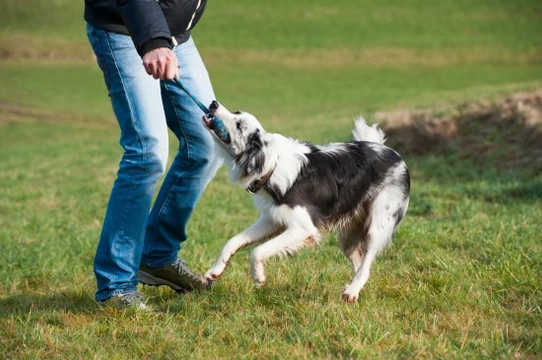
Is it ok if your dog growls when playing?
The sound of a dog growling is almost universally recognised as a warning behaviour, and in some cases, a precursor to aggression. When a dog growls, it makes people sit up and take notice, and is one of the vital cues that dogs use as an indicator of dissatisfaction and to encourage another party to moderate their behaviour.
While growling aggressively should not be permitted and needs to be tackled, dogs will sometimes growl as part of play and play-aggression too, and this is another issue entirely. Dog owners sometimes know that a certain type of growl from their dog is fairly meaningless and not a precursor to aggression, but there is also some uncertainty as to whether or not this is ok, and should be permitted at all.
It is a bad idea to teach your dog that they can absolutely never growl even when the growling is in context, as this means that your dog will lose one of their main tools of warning that they are getting het up or may respond aggressively to something. Curbing aggression is the key, rather than curbing the warning sign of growling, but what if your dog growls when they are having fun and not as a threat?
Read on to learn more about dogs growling in play, and the boundaries of the acceptability of this behaviour.
Vocalisations and growling in play
For many dogs, when they get excited as part of play, they will mock-growl as part of this, just as they might mock-fight and generally pretend to be showing aggression and dominance in all sorts of situations. In some cases, play can go too far and tip over into actual aggression and genuine growling, and the trick is in being able to spot if this is happening or likely to happen.
Your dog’s body language and particularly, their faces will give you the best genuine indication of whether your dog is serious or messing around; if their posture is relaxed and their mouth open, chances are that they are playing. However, if they look stiff in posture and are growling with a closed mouth and curled lip, this is a potential sign of a genuine growl.
Playing the big dog
All dog owners know that dogs really do have a sense of humour, and will often mimic other dogs and mirror their behaviour as part of their clowning around! This may mean that your dog will “pretend” to be aggressive, dominant or the “big dog,” as part of their play, and once you can recognise this it can be very entertaining! Playing the big dog will often involve a fair amount of bounding around, mock-growling and again, a show of teeth without the stiff posture and strong eye contact that accompanies genuine aggression.
Growling at your dog!
If you know when your dog is playing with you and is growling in fun rather than aggression, you can even turn the tables on your dog and play-growl back at them! This will often very much entertain your dog, as of course, growling is not a normal human behaviour! It is vitally important, however, not to do this if you have any reason to suspect that your dog is serious, and you should also watch your dog’s reactions carefully to ensure that they know that you are playing too, and are not genuinely growling at them!
Identifying aggressive behaviour
It is important to get a good read on your dog’s body language in order to be able to tell the difference between play growling and genuine growling, and when one might segue over into the other.
Cues of aggression or that your dog is not playing any more include a stiff, upright tail, raised hackles, strong eye contact and a general tense posture. If your dog is growling from deep in their throat with their mouth closed and the sides of their teeth showing, take this as a warning to calm your dog down, and put a stop to the game before the situation escalates. Once your dog has relaxed and calmed down again, their posture and all of these other cues should relax.
Breed-specific growling traits
Some dogs are significantly more vocal than others, and will tend to use growling as one of the forms of language in their vocabulary, much more than other dogs will. This is often the case with larger dogs and those that have a history of guarding and protective working roles, for whom growling is simply a part of their normal range of communication.
The German Shepherd dog is one that will often growl as part of communication, as well as the Rottweiler and Doberman Pinscher among others. The trick is to get to know your own dog and their moods and responses, in order to judge when growling is simply part of play, and when it means something more sinister.



